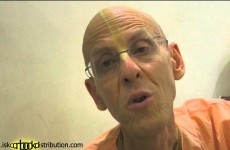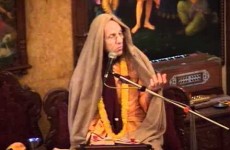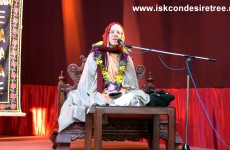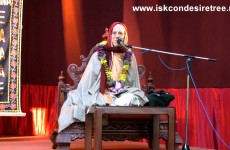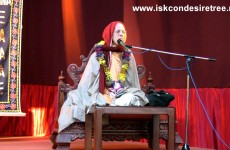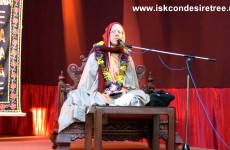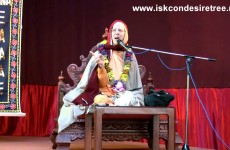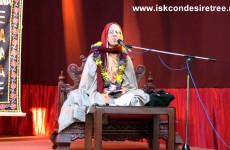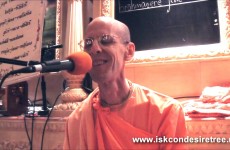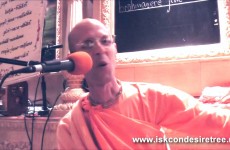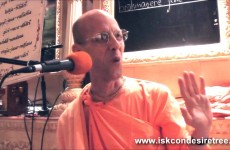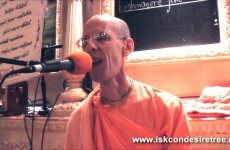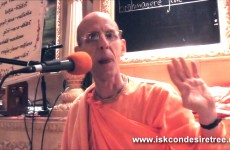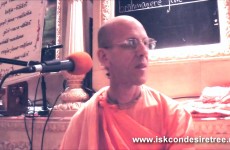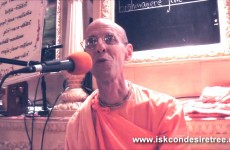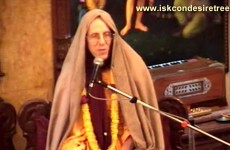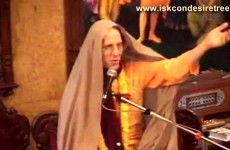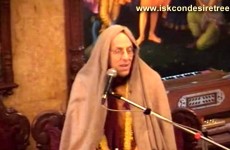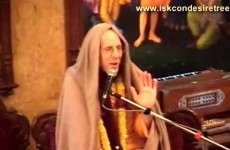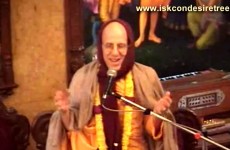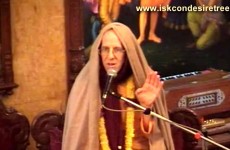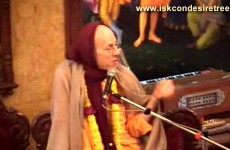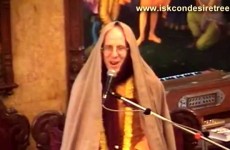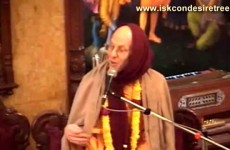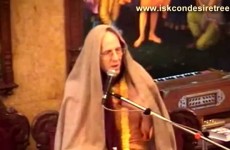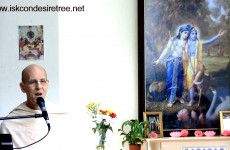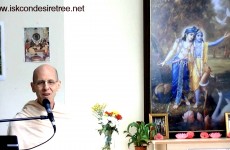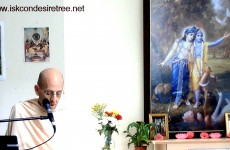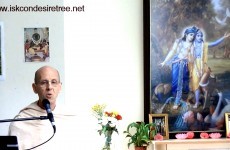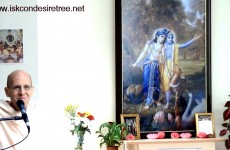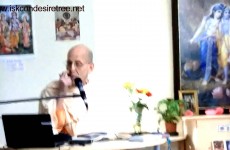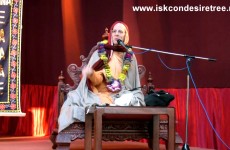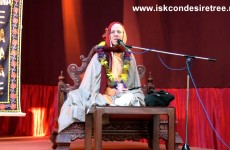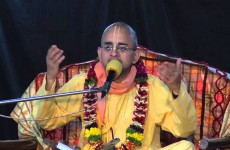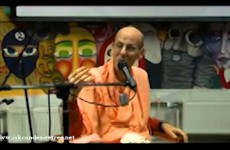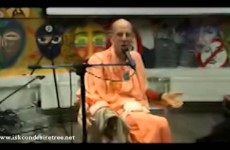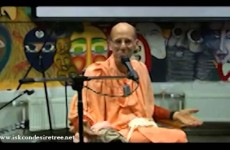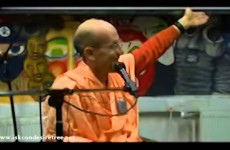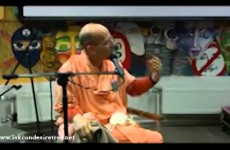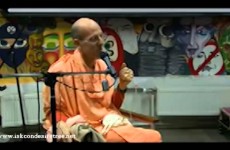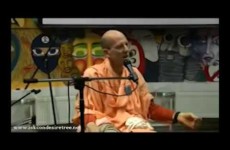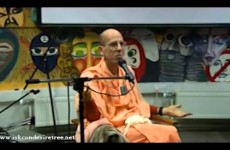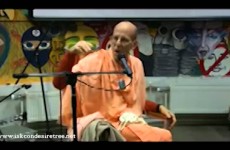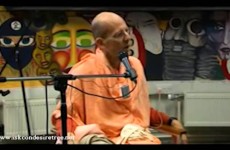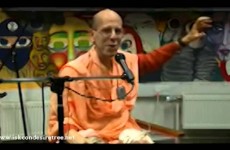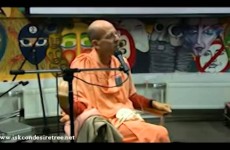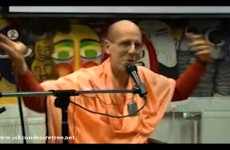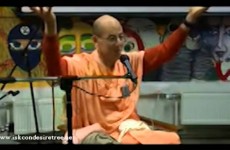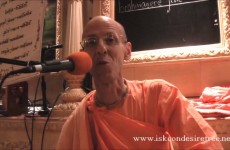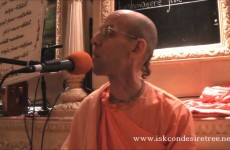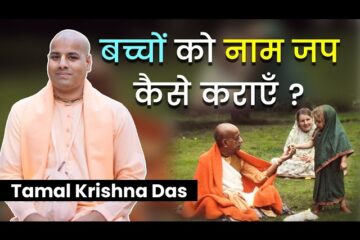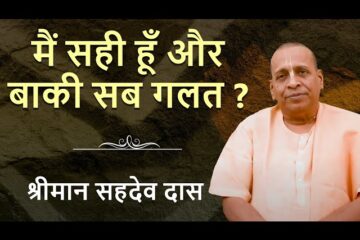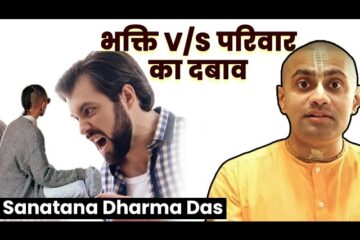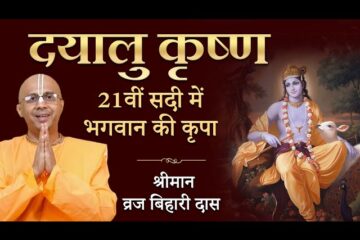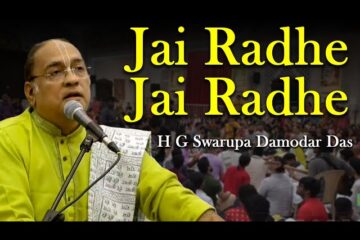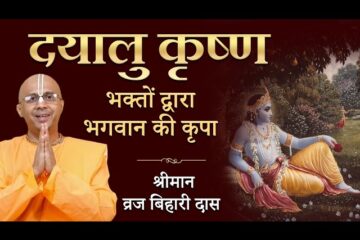Jayadvaita Swami On Bhagavat Gita Chapter3 Verse36 @ ISKCON Chowpatty On 10 Dec 2011
sri-bhagavan uvaca
kama esa krodha esa
rajo-guna-samudbhavah
mahasano maha-papma
viddhy enam iha vairinam
Word for word:
sri-bhagavan uvaca — the Personality of Godhead said; kamah — lust; esah — this; krodhah — wrath; esah — this; rajah-guna — the mode of passion; samudbhavah — born of; maha-asanah — all—devouring; maha-papma — greatly sinful; viddhi — know; enam — this; iha — in the material world; vairinam — greatest enemy.
Translation:
The Supreme Personality of Godhead said: It is lust only, Arjuna, which is born of contact with the material mode of passion and later transformed into wrath, and which is the all-devouring sinful enemy of this world.
Purport:
When a living entity comes in contact with the material creation, his eternal love for Krsna is transformed into lust, in association with the mode of passion. Or, in other words, the sense of love of God becomes transformed into lust, as milk in contact with sour tamarind is transformed into yogurt. Then again, when lust is unsatisfied, it turns into wrath; wrath is transformed into illusion, and illusion continues the material existence. Therefore, lust is the greatest enemy of the living entity, and it is lust only which induces the pure living entity to remain entangled in the material world. Wrath is the manifestation of the mode of ignorance; these modes exhibit themselves as wrath and other corollaries. If, therefore, the mode of passion, instead of being degraded into the mode of ignorance, is elevated to the mode of goodness by the prescribed method of living and acting, then one can be saved from the degradation of wrath by spiritual attachment.
The Supreme Personality of Godhead expanded Himself into many for His ever-increasing spiritual bliss, and the living entities are parts and parcels of this spiritual bliss. They also have partial independence, but by misuse of their independence, when the service attitude is transformed into the propensity for sense enjoyment, they come under the sway of lust. This material creation is created by the Lord to give facility to the conditioned souls to fulfill these lustful propensities, and when completely baffled by prolonged lustful activities, the living entities begin to inquire about their real position.
This inquiry is the beginning of the Vedanta-sutras, wherein it is said, athato brahma jijñasa: one should inquire into the Supreme. And the Supreme is defined in Srimad-Bhagavatam as janmady asya yato 'nvayad itaratas ca, or, "The origin of everything is the Supreme Brahman." Therefore the origin of lust is also in the Supreme. If, therefore, lust is transformed into love for the Supreme, or transformed into Krsna consciousness—or, in other words, desiring everything for Krsna—then both lust and wrath can be spiritualized. Hanuman, the great servitor of Lord Rama, exhibited his wrath by burning the golden city of Ravana, but by doing so he became the greatest devotee of the Lord. Here also, in Bhagavad-gita, the Lord induces Arjuna to engage his wrath upon his enemies for the satisfaction of the Lord. Therefore, lust and wrath, when they are employed in Krsna consciousness, become our friends instead of our enemies.










